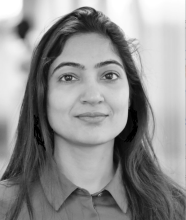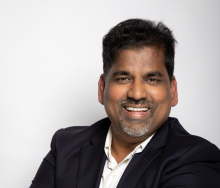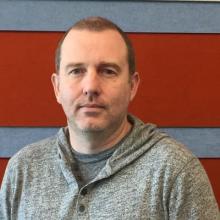Summary
Disclaimer: This summary has been generated by AI. It is experimental, and feedback is welcomed. Please reach out to info@qconlondon.com with any comments or concerns.
The presentation "Building Distributed Event-Driven Architectures Across Multi-Cloud Boundaries" by Teena Idnani explores the implementation of event-driven architecture in a multi-cloud environment.
Introduction
The majority of organizations are moving towards multi-cloud usage, with an emphasis on modernizing infrastructure to compete effectively and comply with regulations.
Key Challenges
- Latency: Reliable low-latency connections are essential. Solutions include using dedicated links like Azure's ExpressRoute and AWS's Direct Connect.
- Building Resilience: Includes implementing event stores, using resilience libraries, and ensuring recovery post-outage mechanisms.
- Event Ordering Consistency: Propose using sequence numbers and deferred processing at the subscriber level to maintain order.
- Duplicate Events: Implement layered defenses to handle duplicates, with techniques such as idempotent event handling and using unique schemas.
Considerations
- Security and Compliance: Increased attack surfaces and compliance needs in multi-cloud environments.
- Schema Evolution: Utilize cloud event schemas to maintain backward and forward compatibility.
- Observability: Critical for monitoring event journeys across clouds using native platforms.
- Design Considerations: Balance between cloud-native and cloud-agnostic approaches to reap multi-cloud benefits.
Conclusion
Design for failure, embrace event stores, and engage in thoughtful implementation planning to successfully build robust, event-driven multi-cloud architectures and avoid the complications during unexpected outages.
Teena Idnani concludes by emphasizing proactive preparation for multi-cloud challenges to ensure a seamless and reliable system operation, offering actionable insights and resources for further exploration.
This is the end of the AI-generated content.
Abstract
“Event-driven architecture” is a frequently discussed topic in architectural conversations. However, in today’s multi-cloud landscape, the more pressing question is: “How can we implement these patterns across cloud boundaries without compromising reliability?
While architects can create appealing event-driven designs, engineers face the daunting task of building distributed systems that must seamlessly integrate with numerous third-party services, manage cross-cloud communication, handle varying event delivery guarantees, and ensure consistency across diverse cloud services.
Key Takeaways:
- Understanding why distributed events behave unexpectedly across cloud boundaries and how to handle it
- Building asynchronous systems spanning multi-cloud that are resilient and perform predictably under high load
- Enhancing observability with a focus on health checks and monitoring across cloud boundaries
- Challenges and approaches to maintain data consistency
Interview:
What is the focus of your work?
I design cloud-native architectures that help organizations navigate complex digital transformations, with a focus on multi-cloud strategies and event-driven system design.
What’s the motivation for your talk?
My motivation behind the talk is to bridge the gap between event-driven architecture concepts and the challenging realities of implementation across cloud boundaries.
Who is your talk for?
Software architects, Cloud engineers, Technical leaders designing distributed systems and multi-cloud infrastructures
What do you want someone to walk away with from your presentation?
Practical strategies and actionable insights for building resilient, observable, and consistent distributed event-driven systems that can seamlessly operate across different cloud boundaries.
What do you think is the next big disruption in software?
Quantum computing. Its potential to revolutionize complex computational problems, particularly in sectors like finance, cybersecurity, and advanced scientific modeling is rapidly emerging.
What was one interesting thing that you learned from a previous QCon?
One interesting thing I have learned is that QCon isn't just a conference - it's a career accelerator. Though QCon conferences may require you to put your day to day sprint tasks behind and lose your incremental progress at work, attending the QCon conference gives you exponential advancement in your career. It changes your perspective on how to look at the problems.
Speaker

Teena Idnani
Senior Solutions Architect @Microsoft, Woman in Tech Leader, Passionate about Quantum, Public Speaker, Mentor
Teena Idnani is a Woman in Tech Leader currently working as a Senior Solutions Architect at Microsoft. She helps organizations in their digital transformation journey by building scalable cloud-native architectures and provides technical leadership and architectural guidance to organizations moving to Azure. In her previous role at JPMC, she was responsible for setting up the Azure platform at the bank, aligning with their multi-cloud provider strategy and enabling various teams as they migrate and modernize their applications on Azure.
In recent years, she has developed a strong interest in quantum computing and has been researching and advocating for its potential applications, particularly in the finance sector.
Her journey in technology has led her to speak at various industry conferences, where she has shared insights on cloud migration, application modernization, event-driven architectures, and the prospects of quantum technologies in the industry.
She also regularly mentors aspiring technologists, with a focus on supporting women in tech.





